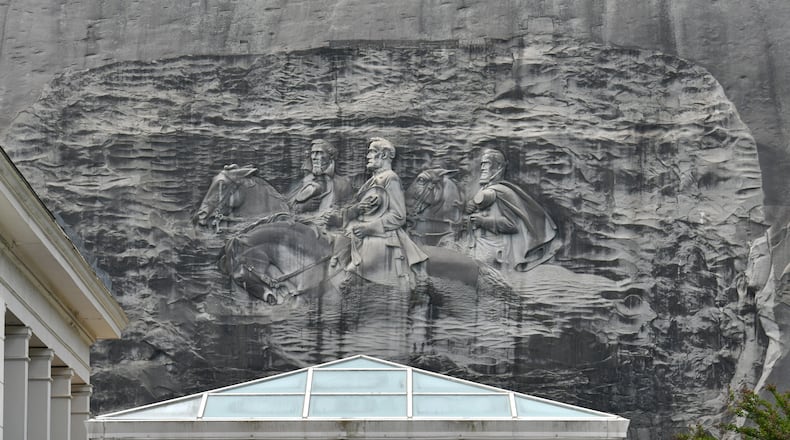A creator has been chosen for the “truth-telling” museum exhibit planned at Stone Mountain Park.
Warner Museums, a firm whose credits include several Civil Rights-related exhibits and the Country Music Hall of Fame in Nashville, was selected by the Stone Mountain Memorial Association’s board of directors during a Monday morning meeting.
“We are both honored and excited to work with the SMMA on this project that tells the comprehensive story of Stone Mountain Park,” Alan K. Sims, Nashville area president for Warner Museums, said in a press release. His statement added that the company works to make sure its exhibits are “engaging, inclusive, memorable and based on relevant scholarship.”
That will be important at Stone Mountain, home of the world’s largest Confederate monument.
The process of determining specific content and building out the exhibit will likely take up to two years and and involve input from community members and historians, memorial association CEO Bill Stephens said. Nothing is set in stone.
But the basic overview provided in Warner’s pitch seemed to reflect park officials’ promises that the new exhibit will “tell the truth” about the park and its massive mountainside carving of Confederate leaders Jefferson Davis, Stonewall Jackson and Robert E. Lee — the creation of which spans decades and has ties to the Jim Crow era, the Ku Klux Klan and, decades later, the state of Georgia’s resistance to court-ordered desegregation.
In the 20-page pitch document provided to The Atlanta Journal-Constitution on Monday afternoon, Warner representatives referenced “monuments and mythmaking,” attempts to downplay the role of slavery as the cause of the Civil War and, more specifically, the role of D.W. Griffith’s film “Birth of a Nation” in inspiring a new generation of the Klan and serving as “a catalyst for the creation of the Stone Mountain Monument.”
The proposal also mentions Shermantown, the Black community formed in the shadow of Stone Mountain after the Civil War, and recommends the creation of an outdoors “I Have a Dream” sculpture garden.
As pitched, that feature would include “historic African American characters who fought for social justice and whose work reached the entire nation.”
Stephens said his organization will “continue to fulfill” its mandate under state law to maintain Stone Mountain Park as a monument to the Confederacy, but vowed that the exhibit would also “offer a more wide-ranging interpretation of the mountain and the monument for our visitors.”
Warner Museums, which was chosen from among six bidders, is based in both Birmingham, Alabama, and Nashville, Tennessee. Its existing work includes a “freedom riders” exhibit in Montgomery and another highlighting Birmingham’s 16th Street Baptist Church, a Black congregation bombed by a white supremacist in 1963.
Memorial association board members visited the latter in recent weeks.
Rev. Abraham Mosley, the memorial association’s board chair, said seeing Warner’s existing work made him confident they would “do a great job for what we need here at Stone Mountain and the state of Georgia.”
“What we’re trying to do is get the right message out to the people. What they’ve been asking for,” Mosley said.
A potential price tag for Warner’s work at Stone Mountain has not been provided, but officials have previously suggested it would run in the seven figures. The memorial association could vote soon on issuing at least $5 million bonds to both build exhibit and fund a larger renovation of Memorial Hall, the building where it will be housed.
“Our next steps include setting out a timeline, along which we will be taking input from various historians and also members of the public on what they think the content should be,” Stephens said. “This is the beginning of a comprehensive and complete process.”
The exhibit, of course, was just one of a handful of modest changes to the park’s Confederate imagery that the memorial association approved in May 2021.
Other approved actions included a tweak to the memorial association’s own logo, which included a depiction of the carving, and getting a century-old covered bridge at the park renamed for its Black creator and added to the National Register of Historic Places.
A ceremony took place at the bridge in September.
Yet another promised change — moving a Confederate flag plaza from the base of the park’s well-traversed walk-up trail — still has not happened.
Records previously obtained by The Atlanta Journal-Constitution showed a contract for relocating the flags was in place more than a year ago, but Stephens said in September that the issue had been put “on the backburner” during the park’s transition to a new private management partner.
About the Author
Keep Reading
The Latest
Featured



